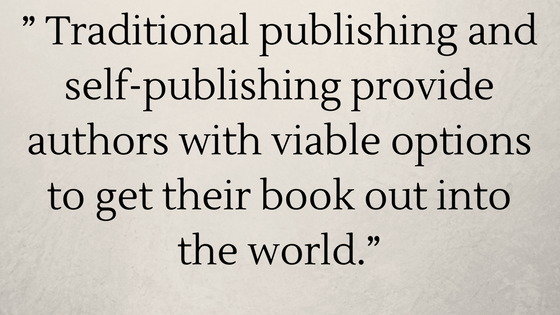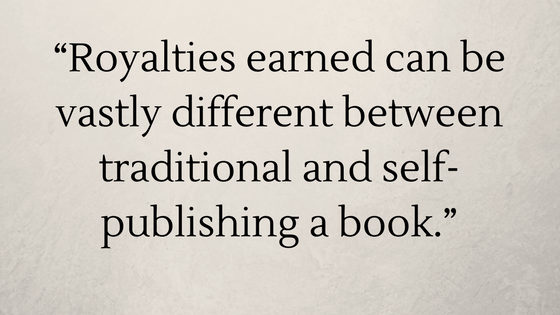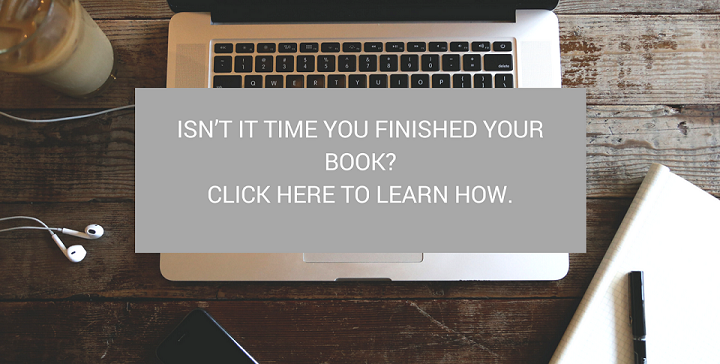Whether you write your own non-fiction book or hire a ghostwriter, you still have a decision to make.
Do you go through a traditional publisher or should you self-publish a book?
Until Amazon’s Kindle Direct Publishing came into being back in 2007, this question was a no-brainer. Sure, self-publishing existed prior to that, but it was nowhere near the level it’s at in today’s market due to that platform.
Still, both co-exist and provide authors viable options to get their book out into the world. So, the question remains: Is it better to go through a traditional publisher or self-publish your non-fiction book?
Let’s take a look at how they differ and some factors you should look at before you decide.
How Fast Do You Want Your Book Available to Your Audience?
A book takes a long time to write. If you’re a full-time writer, a book can take at least 6 to 9 months to write, and that’s not including the proofreading and editing process.

If you decide to go the self-publishing route, all you need to do next is:
- Get someone to do the art for your book cover and convert it into an image file
- Format your book properly for Kindle or the platform you decide to use
- Upload the content and cover image to the platform
- Hit the Publish button
Your book is then live for your audience to buy and read within a matter of hours. And depending on the platform you choose, you can also utilize print-on-demand services if you prefer to sell physical books.
But if you decide to go the traditional publishing route, it can take considerably longer to get your book in front of your audience.
If you publish the traditional way, you will need to:
- Get an agent (in most cases), which can take up to a year
- Send your completed manuscript to publishers
- Wait for one who will offer you a publishing contract, which can also take up to a year
- Wait anywhere from 6 months to 2 years for them to publish your book for sale
How Much Control Do You Want Over the Finished Product?
As was mentioned in the last section, if you go with a traditional publisher, you can’t move forward until your work is accepted.
And if you can’t find a publisher who will publish your work, you’re back to square one. You may have what’s considered a niche book that doesn’t have enough of an audience for them to publish. Or, you may have what they feel is a publishable book, but they want you to make changes to the content.
If you don’t want to be bothered with those types of issues, then you may want to go the self-publishing route.
If a publisher does accept your book as-is or with minimal changes, you also have to leave the design work and most of the marketing efforts in their court. For example, maybe you have the perfect idea for a cover, but the publisher has their own design team for that. Or, you consider your book to be in the business category, but your publisher categorizes it as “self-help.”
Sometimes a publisher will even make you change the title of your book. With self-publishing, changing your book title, cover, and any of the content is completely up to you and you can do it as often as you like.

What Are Your Book Goals?
To determine if you should self-publish a book or use a traditional publisher, you also need to consider your goal for writing your book.
Is it important for your book to be distributed through a bookstore or is an online platform acceptable? If you go with traditional publishing, they can help you with both. With self-publishing, you will face an uphill climb to getting a physical book into bookstores. However, if your book sells successfully online, a publisher may take notice and offer you a book deal, so you can distribute it in bookstores.
How much money, if any, do you want to make in book sales? Some thought leaders and business professionals don’t consider their books as a money-making opportunity. They sell or giveaway their books to develop a following and build trust and credibility.
But others, along with professional authors, make a decent amount of income through the sale of their books. And those sales translate into royalties earned, which can be vastly different between traditional and self-publishing a book.

With traditional publishing, you’ll be able to get an advance ranging from about $5,000 to $20,000 depending on your status, book topic, and credentials. Although this is a considerable amount, it’s not “free” money. You won’t earn anymore from the publisher until your royalties surpass the amount of your advance. Once that happens, the royalties you earn on a non-fiction book will be about 10%, which will scale up once the book sells more copies. Publishers issue authors a royalty statement along with a check for any amount payable about every six months.
When you self-publish a book, you won’t get an advance upfront. However, the royalties you receive are much higher than with traditional publishing. On a platform like Amazon, your book will receive between 35% and 70% in royalties. For every month you sell books, you will receive your royalty payment every 60 days. So, if you sell your book consistently every month, after the initial 60 days, you will receive a royalty payment at the end of every month.
Traditional Publishing or Self-Publish a Book?
As you can see, there’s a lot to consider when deciding to self-publish a book or go through a traditional publisher.
By learning about what options you have, you can have a better idea of what will work for you, your timeline, and your goals.

